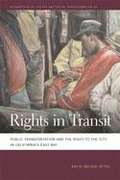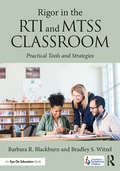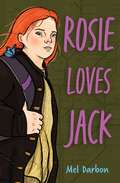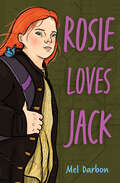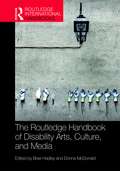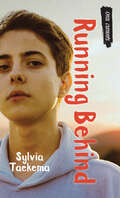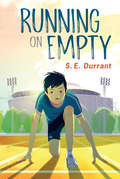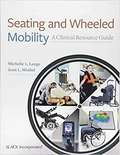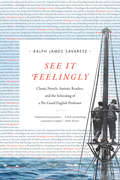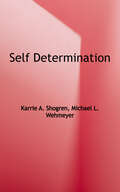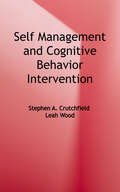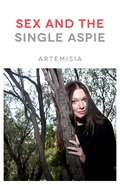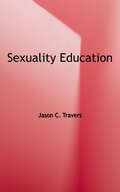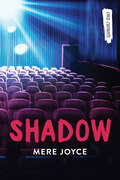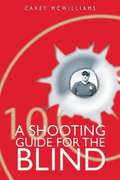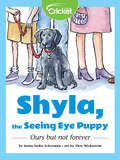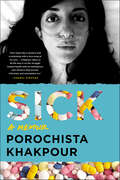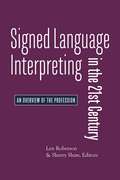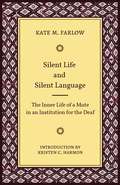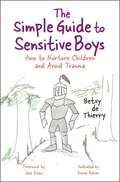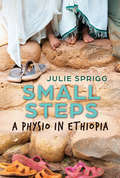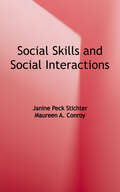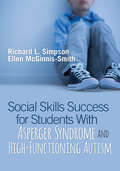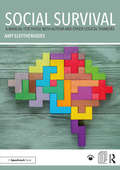- Table View
- List View
Rights In Transit: Public Transportation And The Right To The City In California's East Bay
by Kafui Ablode Attoh Mathew Coleman Sapana DoshiIs public transportation a right? Should it be? For those reliant on public transit, the answer is invariably "yes" to both. Indeed, when city officials propose slashing service or raising fares, it is these riders who are often the first to appear at that officials' door demanding their "right" to more service. Rights in Transit starts from the presumption that such riders are justified. For those who lack other means of mobility, transit is a lifeline. It offers access to many of the entitlements we take as essential: food, employment, and democratic public life itself. While accepting transit as a right, this book also suggests that there remains a desperate need to think critically, both about what is meant by a right and about the types of rights at issue when public transportation is threatened. Drawing on a detailed case study of the various struggles that have come to define public transportation in California's East Bay, Rights in Transit offers a direct challenge to contemporary scholarship on transportation equity. Rather than focusing on civil rights alone, Rights in Transit argues for engaging the more radical notion of the right to the city.
Rigor in the RTI and MTSS Classroom: Practical Tools and Strategies
by Barbara R. Blackburn Bradley Steven WitzelIn this new book, bestselling author Barbara R. Blackburn and intervention expert Bradley S. Witzel show you how to develop rigorous RTI and MTSS programs that will support students and lead them to lasting success. Written in a clear, engaging style, Rigor in the RTI and MTSS Classroom combines an in-depth discussion of the issues facing at-risk and learning-disabled students with practical strategies for all teachers. You’ll discover how to: Improve academic and social-emotional performance with scaffolding and demonstration of learning techniques; Establish and teach class rules, expectations, and consequences; Use evidence-based activities to spark student discussion; Implement rigorous, research-based strategies for math, literacy, reading, and writing development; Assess student growth and encourage self-reflection. Form an MTSS leadership team to ensure that student needs are met across building and district levels. Each chapter contains anecdotes from schools across the country as well as a variety of ready-to-use tools and activities. Many of the tools are offered as free eResources at www.routledge.com/9781138193383, so you can easily print and distribute them for classroom use.
Rosie Loves Jack
by Mel DarbonSixteen-year-old Rose Tremayne, who has Down syndrome, attends a program for special-needs students in a London suburb. There she meets Jack, a young man she says "makes the sun shine in my head." Rosie and Jack are devoted to one another, but Jack, who has a traumatic brain injury, has trouble controlling his anger. After he breaks a window in an outburst he is sent to a therapy program in the town of Brighton. Rosie's father seizes the opportunity to end the relationship, but Rose takes matters into her own hands. She sets out on her own to find Jack, leading to a series of harrowing adventures that show her strength and power she never knew she possessed.
Rosie Loves Jack
by Mel DarbonRosie is a sixteen-year-old girl with Down syndrome who's fighting for little freedoms, tolerance, and love."They can't send you away. What will we do? We need us. I stop your angry, Jack. And you make me strong. You make me Rosie."Rosie loves Jack. Jack loves Rosie. So, when they're separated, Rosie will do anything to find the boy who makes the sun shine in her head. Even run away from home. Even struggle across London and travel to Brighton, though the trains are canceled, and the snow is falling. Even though some people might think a girl with Down syndrome could never survive on her own.Introducing a strong, determined, and neurodiverse teen protagonist, debut author Mel Darbon gives readers a unique character experience with a much-needed, alternative point of view. This contemporary young adult novel is a voice-driven, heartfelt story of finding your place in a world that often leaves no room for outsiders.
The Routledge Handbook of Disability Arts, Culture, and Media
by Bree Hadley Donna McDonaldIn the last 30 years, a distinctive intersection between disability studies – including disability rights advocacy, disability rights activism, and disability law – and disability arts, culture, and media studies has developed. The two fields have worked in tandem to offer critique of representations of disability in dominant cultural systems, institutions, discourses, and architecture, and develop provocative new representations of what it means to be disabled. Divided into 5 sections: Disability, Identity, and Representation Inclusion, Wellbeing, and Whole-of-life Experience Access, Artistry, and Audiences Practices, Politics and the Public Sphere Activism, Adaptation, and Alternative Futures this handbook brings disability arts, disability culture, and disability media studies – traditionally treated separately in publications in the field to date – together for the first time. It provides scholars, graduate students, upper level undergraduate students, and others interested in the disability rights agenda with a broad-based, practical and accessible introduction to key debates in the field of disability art, culture, and media studies. An internationally recognised selection of authors from around the world come together to articulate the theories, issues, interests, and practices that have come to define the field. Most critically, this book includes commentaries that forecast the pressing present and future concerns for the field as scholars, advocates, activists, and artists work to make a more inclusive society a reality.
Running Behind (Orca Currents)
by Sylvia TaekemaEven though he was once his biggest rival, Jake Jarvis is thrilled when Spencer Solomon agrees to join the Diamonds cross-country team to compete in the Barry's Bay provincial championships. Everyone is pumped, everyone is focused, and Jake has to admit, he really likes their chances. At the last moment, Spencer informs the team that he can't go. Jake is furious. But when Spencer explains that he's worried about leaving his wheelchair-bound father alone, Jake gets to work on finding a solution to get Spencer and the Diamonds back on track.
Running on Empty
by S. E. DurrantA boy shoulders great responsibility for his differently abled parents in this touching middle-grade story.CJ is a runner--and when he's running, he's fast, free, and flying. It was Grandad who taught him to run, and who did a lot more, besides. Grandad always made sure things were in order around CJ's house, because his parents could not. CJ's parents are different, and because they do not have the tools to cope with certain elements of everyday life, it was Grandad who reviewed the water bill, saw to it that the electricity meter had funds, and kept everything else shipshape. But now, with Grandad's sudden passing and Aunt Joan about to have a baby, CJ knows it's up to him to make sure Mum and Dad are okay and to keep the household going. It would be a hard job for any adult, but for a kid who's also starting middle-school and trying to impress the gruff track coach . . . is staying afloat even possible? Through its heartwarming and believable characters, Running on Empty sensitively explores the dynamics of a loving family finding its way forward, and the unexpected helping hands that pitch in along the way.
Seating And Wheeled Mobility: A Clinical Resource Guide
by Michelle L. Lange Jean MinkelSeating and Wheeled Mobility: A Clinical Resource Guide presents clinical assessment considerations when working with a person with a disability who may need wheelchair seating for postural support, skin integrity, or a wheelchair base to best meet dependent or independent mobility needs. <p><p> Michelle L. Lange and Jean Minkel have designed this text to support occupational and physical therapists, complex rehabilitation technology suppliers, and even third-party payers who are interested in wheelchair seating and mobility assessment and applications. Seating and Wheeled Mobility provides a wide spectrum of information from foundational information for those practitioners who are new to the field to in-depth, population-specific information for practitioners who perhaps have not worked with a particular population in the past. <p> Seating and Wheeled Mobility: A Clinical Resource Guide provides the depth and breadth of the clinical practice of wheelchair seating and mobility to both those who are new to the field, as well as seasoned professionals.
See It Feelingly: Classic Novels, Autistic Readers, and the Schooling of a No-Good English Professor (Thought in the Act)
by Ralph James Savarese“We each have Skype accounts and use them to discuss [Moby-Dick] face to face. Once a week, we spread the worded whale out in front of us; we dissect its head, eyes, and bones, careful not to hurt or kill it. The Professor and I are not whale hunters. We are not letting the whale die. We are shaping it, letting it swim through the Web with a new and polished look.”—Tito Mukhopadhyay Since the 1940s researchers have been repeating claims about autistic people's limited ability to understand language, to partake in imaginative play, and to generate the complex theory of mind necessary to appreciate literature. In See It Feelingly Ralph James Savarese, an English professor whose son is one of the first nonspeaking autistics to graduate from college, challenges this view. Discussing fictional works over a period of years with readers from across the autism spectrum, Savarese was stunned by the readers' ability to expand his understanding of texts he knew intimately. Their startling insights emerged not only from the way their different bodies and brains lined up with a story but also from their experiences of stigma and exclusion. For Mukhopadhyay Moby-Dick is an allegory of revenge against autism, the frantic quest for a cure. The white whale represents the autist's baffling, because wordless, immersion in the sensory. Computer programmer and cyberpunk author Dora Raymaker skewers the empathetic failings of the bounty hunters in Philip K. Dick's Do Androids Dream of Electric Sheep? Autistics, some studies suggest, offer instruction in embracing the nonhuman. Encountering a short story about a lonely marine biologist in Antarctica, Temple Grandin remembers her past with an uncharacteristic emotional intensity, and she reminds the reader of the myriad ways in which people can relate to fiction. Why must there be a norm? Mixing memoir with current research in autism and cognitive literary studies, Savarese celebrates how literature springs to life through the contrasting responses of unique individuals, while helping people both on and off the spectrum to engage more richly with the world.
Self-Determination
by Karrie Ann Shogren Michael L. WehmeyerThis book offers specific and clearly described strategies for teaching learners with ASD to become more self-determined in their actions regarding their educational program plans and outcomes.
Self-Management and Cognitive Behavior Interventions
by Stephen A. Crutchfield Leah WoodSelf-Management and Cognitive Behavior Interventions is a guide to using cognitive behavior modification (CBM) with students with autism spectrum disorder (ASD) to increase the student's self-management. CBM approaches include self-management intervention (SMI) and cognitive behavior intervention (CBI). SMI is synonymous with self-regulation and encompasses a variety of cognitive processes, such as controlling emotions, attending to relevant information, planning future behavior, remaining flexible through unplanned setbacks, and behaving in a way that enhances the likelihood of achieving future goals. SMI is managed by the student and is used to address a wide variety of target behaviors. CBI helps individuals examine their thoughts and emotions and adopt actions that change their thinking as well as their behavior. This book examines specific, research-based cognitive behavior interventions and self-management interventions and explores designing and implementing interventions for students with ASD.
Sex and the Single Aspie
by ArtemisiaThis ground-breaking book about sexuality speaks to women on the autism spectrum in fresh new ways, opening doors to discussion, and blowing the lid off taboo subjects. One of the many problems women on the spectrum face is not always understanding how relationships and boundaries work for other people. This book provides answers, plus more that they may not even have thought to ask. Covering one night stands, the importance of safe sex, self-respect, and double standards, there is a wealth of information about the ethics and self-understanding involved in relationships. Written with humour and honesty, this is the go-to guide for sex on the spectrum.
Sexuality Education (PRO-ED Series on Autism Spectrum Disorders, Second Edition)
by Jason C. Travers"This book promotes the use of a behavior analytic approach and encourages and supports the provision of comprehensive sexuality education (CSE) for healthy and safe sexual development of learners with autism"
Shadow (Orca Currents)
by Mere JoyceFourteen-year-old Preston Craft is organizing a film festival for his school's film club. When one of the films goes missing two days before the festival begins, Preston is convinced it was stolen and is determined to get it back. The only indication of the theft is a suspicious shadow that Preston noticed right before he discovered the film was gone—but Preston is legally blind and no one quite believes him. However, not unlike the gritty private eyes in the classic black-and-white films he adores, Preston refuses to give up. Can he solve the mystery based on such a shady clue?
A Shooting Guide for the Blind
by Carey McWilliamsThis is a guide regarding the proper application of firearms, especially by those with any degree of visual impairment, with an emphasis on safe firearms usage when engaging in activities such as hunting, target shooting, and even self-defense at home or on the street. Author Carey McWilliams became the first totally blind person to obtain a concealed carry license in 2001. In this book, he utilizes his thirty years of certified gun training to teach others with visual impairments, as well as those seeking to train them, all the various methods that have allowed him to pass countless shooting exams to obtain a number of state-issued concealed carry permits and hunting licenses. For this guide's creation, real guns from the author's personal firearms collection were used as props for certain technical sections, as well as old written text and recorded lectures obtained during his training through the National Rifle Association, law enforcement, and even the United States Army. Topics include how to identify, load, unload, and work with different types of firearms without the benefit of sight, how the military's techniques in close-quarters combat governs defensive shooting by the blind, case studies and official government research debunking the myth that blind people pose a greater danger than the sighted regarding firearm usage, and how to find resources to obtain training certification.
Shyla, the Seeing Eye Puppy: Ours But Not Forever
by Susan Yoder AckermanCourtney, her brother Jed, and the whole family must chip in to take care of Shyla, the Labrador retriever puppy, before she is sent to The Seeing Eye to become a guide dog for the blind. Shyla is trained at every opportunity, but the year she stays with Courtney's family goes by fast!
Sick: A Memoir
by Porochista KhakpourA Best Book of the Year: Real Simple, Entropy, Mental Floss, Bitch Media, The Paris Review, and LitHub.Time Magazine's Best Memoirs of 2018 • Boston Globe's 25 Books We Can't Wait to Read in 2018 • Buzzfeed's 33 Most Exciting New Books • GQ Best Non Fiction Book of 2018 • Bustle’s 28 Most Anticipated Nonfiction Books of 2018 list • Nylon’s 50 Books We Can’t Wait to Read in 2018 • Electric Literature’s 46 Books to Read By Women of Color in 2018 “Porochista Khakpour’s powerful memoir, Sick, reads like a mystery and a reckoning with a love song at its core. Humane, searching, and unapologetic, Sick is about the thin lines and vast distances between illness and wellness, healing and suffering, the body and the self. Khakpour takes us all the way in on her struggle toward health with an intelligence and intimacy that moved, informed, and astonished me.” — Cheryl Strayed, New York Times bestselling author of WildA powerful, beautifully rendered memoir of chronic illness, misdiagnosis, addiction, and the myth of full recovery.For as long as author Porochista Khakpour can remember, she has been sick. For most of that time, she didn't know why. Several drug addictions, some major hospitalizations, and over $100,000 later, she finally had a diagnosis: late-stage Lyme disease. Sick is Khakpour's grueling, emotional journey—as a woman, an Iranian-American, a writer, and a lifelong sufferer of undiagnosed health problems—in which she examines her subsequent struggles with mental illness and her addiction to doctor prescribed benzodiazepines, that both aided and eroded her ever-deteriorating physical health. Divided by settings, Khakpour guides the reader through her illness by way of the locations that changed her course—New York, LA, Santa Fe, and a college town in Germany—as she meditates on the physiological and psychological impacts of uncertainty, and the eventual challenge of accepting the diagnosis she had searched for over the course of her adult life. A story of survival, pain, and transformation, Sick candidly examines the colossal impact of illness on one woman's life by not just highlighting the failures of a broken medical system but by also boldly challenging our concept of illness narratives.
Signed Language Interpreting in the 21st Century: An Overview of the Profession
by Len Roberson Sherry ShawThis text provides interpreting students with a broad knowledge base that encompasses the latest research, addresses current trends and perspectives of the Deaf community, and promotes critical thinking and open dialogue about the working conditions, ethics, boundaries, and competencies needed by a highly qualified interpreter in various settings. This volume expands the resources available to aspiring interpreters, including Deaf interpreters, and incorporates the voices of renowned experts on topics relevant to today’s practitioners. Each chapter provides students with objectives, keywords, and discussion questions. The chapters convey clear information about topics that include credentialing, disposition and aptitude for becoming an interpreter, interpreting for people who are DeafBlind, and working within specialty settings, such as legal and healthcare. A key resource for interpreter certification test preparation, this text follows the interpreter’s ethical, practical, and professional development through a career of lifelong learning and service.
Silent Life and Silent Language: The Inner Life of a Mute in an Institution for the Deaf (Gallaudet Classics Deaf Studie #11)
by Kate M. Farlow Kristen C. HarmonSilent Life and Silent Language presents a fictionalized account of life at a Midwestern residential school for deaf students in the years following the Civil War. Based on the experiences of the author, who became deaf at the age of nine and entered a residential school when she was twelve, this historical work is remarkable and rare because it focuses on signing deaf women’s lives. One of only a few accounts written by deaf women in the 19th century, Silent Life and Silent Language gives a detailed description of daily life and learning at the Indiana Asylum for the Education of the Deaf and Dumb. Kate M. Farlow wrote this book with the goal of giving hearing parents hope that their deaf children would be able to lead happy and productive lives. She sought to raise awareness of the benefits of deaf schools and was an early advocate for the use of American Sign Language and of bilingual education. The Christian influence on the school and on the author is strongly present in her writing and reflects an important component of deaf education at the time. Descriptions of specific signs, games, ASL story nights, and other aspects of the signing community during the 1870s will be of interest to modern students and researchers in linguistics, deaf education, Deaf studies, and Deaf history. Farlow’s work reveals a sophisticated, early understanding of the importance of access to language, education, and community for deaf individuals.
The Simple Guide to Sensitive Boys: How to Nurture Children and Avoid Trauma
by Betsy De Thierry Emma Reeves Jane EvansWhat do Pablo Picasso, Prince and Martin Luther King Jr have in common? All have been described as having been highly sensitive boys and all grew up to be outstanding, sensitive men. Too often, adults think of sensitive boys as shy, anxious and inhibited. They are measured against society's ideas about 'manliness' -- that all boys are sociable, resilient and have endless supplies of energy. This highly readable guide is for any adult wanting to know how to understand and celebrate sensitive boys. It describes how thinking about boys in such old-fashioned ways can cause great harm, and make a difficult childhood all the more painful. The book highlights the real strengths shared by many sensitive boys - of being compassionate, highly creative, thoughtful, fiercely intelligent and witty. It also flips common negative clichés about sensitive boys being shy, anxious and prone to bullying to ask instead: what we can do to create a supportive environment in which they will flourish? Full of simple yet sage advice, this book will help you to encourage boys to embrace their individuality, find their own place in the world, and to be the best they can be.
Small Steps: A Physio in Ethiopia
by Julie SpriggThis heartfelt memoir and travel story is about an idealistic young womanforced to confront the limitations of how much difference she can make in acountry rich in culture but stark in its deprivations. Julie Sprigg spent threeyears in Ethiopia, volunteering at a convent clinic and then teaching the firstphysiotherapy cohort to ever graduate from Gondar University. In Ethiopiashe falls in love, and learns as much about herself as she does about thiscomplex, magnificent country and its people.
Social Skills and Social Interactions
by Janine Peck Stichter Maureen A. ConroySocial Skills and Social Interactions is written to enhance the quality and quantity of social interactions of individuals with autism spectrum disorder (ASD) and their peers. The text describes social competence and peer-related social behaviors, a multisource functional approach to assessment, and evidence-based practices for fostering peer-related social interactions. This book provides a systematic process for educators to assess, plan for, and support students' social behaviors with peers in the classroom.
Social Skills Success for Students With Asperger Syndrome and High-Functioning Autism
by Richard L. Simpson Ellen McGinnis-SmithProvide students the social skills instruction they need to succeed in school and in life! This practical resource provides evidence-based strategies for enhancing social skills of children and adolescents who have Asperger Disorder and other forms of high-functioning autism. Case studies, vignettes, classroom materials, checklists, and templates will help you: Deliver interventions that model desirable behaviors and provide opportunities for students to practice Support students in navigating social situations, forming relationships with peers and adults, and following rules and routines Develop, implement, and evaluate social skills intervention and support programs
Social Skills Success for Students With Asperger Syndrome and High-Functioning Autism
by Richard L. Simpson Ellen McGinnis-SmithProvide students the social skills instruction they need to succeed in school and in life! This practical resource provides evidence-based strategies for enhancing social skills of children and adolescents who have Asperger Disorder and other forms of high-functioning autism. Case studies, vignettes, classroom materials, checklists, and templates will help you: Deliver interventions that model desirable behaviors and provide opportunities for students to practice Support students in navigating social situations, forming relationships with peers and adults, and following rules and routines Develop, implement, and evaluate social skills intervention and support programs
Social Survival: A Manual for those with Autism and Other Logical Thinkers
by Amy EleftheriadesSocial Survival is a practical manual outlining what it means to be a logical thinker and how logical thinkers can make sense of the social world. Relevant for young logical thinkers including those with high-functioning autism and Asperger’s syndrome, this book clearly outlines how social confusion might arise and how this can be overcome. Written in a clear and unpatronising style, the book considers a range of different social scenarios and breaks these down into manageable components with helpful activities to be completed by the young person. Chapters discuss the nature and benefits of logical thinking, nuances of language and communication in social situtations, and the intricacies of social etiquette and peer interaction. Features include: appealing visual resources; practical activities around social situations that are relevant to young people; blank templates which can be photocopied and are available for download online; guidance for family members on how to encourage ongoing communication; an action plan which can be personalised for different scenarios. Social Survival will be essential reading for health, social care and education professionals and parents working with those who have high functioning autism or Asperger’s syndrome or those who are logical thinkers who do not have a diagnosis. In addition, this book can be used independently by the young person themselves.
